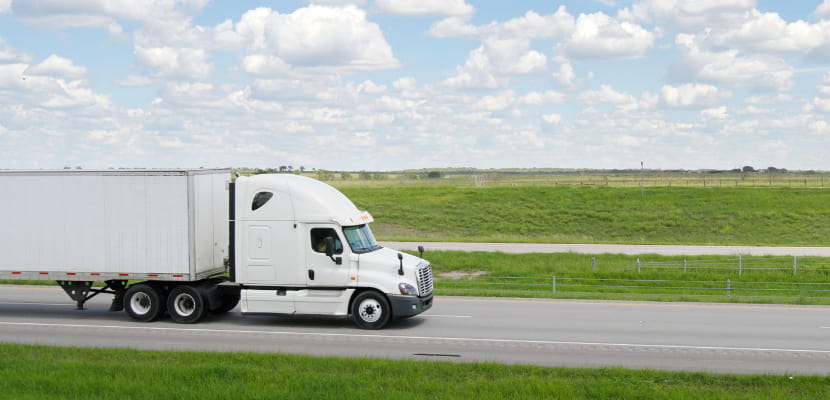An electronic logging device (ELD) and an automatic onboard recording device (AOBRD) are both types of in-cab hardware that replace paper logbooks by digitally documenting a commercial driver’s hours of service (HOS).
Drivers are legally required to keep electronic HOS records to prove they aren’t exceeding the maximum number of driving hours allowed during a specific time period.
While AOBRD solutions include some of the same functions as ELD systems, they are legacy products that likely won't meet all the standards required by law.
So, what is an AOBRD system, and how is it different from ELD? Read on to find out.
What is an AOBRD?
An AOBRD is an electronic device that originated as a result of the U.S. Hours of Service of Drivers Regulations Section 395.15, mandated by the Federal Motor Carrier Safety Administration (FMCSA).
This was the first hardware system to electronically transmit HOS info to a recordkeeping facility or database, and make it available to the Department of Transportation (DOT) authorities.
AOBRDs were designed to improve the inconsistency and inaccuracies of paper logs. Also, electronic logs help protect drivers from motor carriers, shippers, or brokers that impose driving schedules that violate safety regulations.
What is the ELD mandate?
The ELD mandate (also called ELD Final Rule) is a U.S. federal government regulation that requires operators of commercial motor vehicles to use ELDs to track HOS.
The mandate became law on February 16, 2016, but drivers had a grace period. For drivers using paper logs, the mandatory compliance date to adopt ELDs was December 18, 2017. Vehicles with AORBDs had even longer to comply, with a deadline of December 16, 2019 to upgrade or replace their systems with ELDs.
The ELD mandate is designed for broad application within the industry but does have some exceptions. Those exempt from the rule are:
- Drivers who use paper logs no more than 8 days during any 30-day period.
- Driveaway-towaway drivers
- Vehicles manufactured before model year 2000
Learn more about “Complying With the ELD Mandate.”
AOBRD vs ELD: Key differences
According to this ELD vs AOBRD FMCSA comparison chart, here are the key differences between ELD and AOBRD:
Roadside inspections
AOBRD doesn’t address the format for the transfer of drivers’ logs to enforcement officials. The device doesn’t have to display a graph grid of HOS. Only the time and duty status change sequence is sufficient.
On the other hand, the ELD mandate requires you to transfer the ELD data via either telematics or local methods (USB and Bluetooth). In case the transfer is not available, the ELD must present the standardized driver's log info to the enforcement officials by either display—reasonably viewed by the enforcement official without entering the vehicle—or printout.
Location recording
In AOBRD, location records are required at each change of duty status, which can be recorded automatically or manually. On the other hand, in ELD devices, location must be automatically captured in terms of latitude-longitude coordinates with accuracy within two decimal places, unless the driver operates under personal conveyance when the precision is reduced (one decimal place).
The ELD mandate also requires that the location must be retrieved at least once every five miles of driving. The ELD must also display the geo-location information specifying approximate distance and direction to a nearby city, town, or village of a state that has a population greater than 5,000.
Driver log history editing
In AOBRD, editing the driver's history is not clearly addressed. The record of duty status maintained and generated by AOBRDs may be edited by a carrier to accurately reflect the driver's activity. However, the carrier must include an explanation of the mistake in the remark section.
In the case of ELD, the driver must be able to review, edit, and annotate the ELD record. All edits by the driver or carrier must have an annotation explaining the reason for the change. Plus, carriers may suggest edits on submitted driver's logs, but the driver must accept or reject the proposed edits and recertify.
Driving time
Another key difference between ABOARD vs ELD is the driving time. In AOBRD, driving time can only be edited when attributed to the wrong driver. Unlike AOBRD, the ELD mandate doesn’t allow you to edit driving time in ELD devices.
Should you replace your legacy AOBRD?
Unless you fall within one of the exemptions listed previously, it’s mandatory to transition from AOBRD to ELD. While fleets must legally transition, ELDs offer a number of benefits that make it easier and more efficient to record driver data electronically, including:
- Information accuracy: ELDs record more information than AOBRDs, and with greater accuracy. ELDs can identify a driver's change in duty status, location information, vehicle motion, and system malfunctions. For example, An ELD device automatically switches a driver's duty status to 'On-Duty, Not Driving' whenever their vehicle has stopped moving for 5 consecutive minutes, and the driver has not responded to a prompt within 60 seconds. AOBRDs aren’t required to change a driver's duty status when the vehicle is no longer in motion.
- Edit history: ELDs display all log edit history for review by DOT inspectors, and auto-generated events cannot be edited. AOBRDs record edits, but do not readily display them.
The final deadline has passed to upgrade your fleet and drivers to an ELD system, so if you haven’t made the transition yet, it’s critical to begin immediately.
Need a hand? At Lytx, we can help you meet both DOT compliance and ELD compliance. We offer our customers the option to add Geotab’s Cloud ELD to existing services, or we can even source an ELD reseller to help you meet your compliance needs. Book a demo now to learn more.
